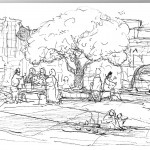 We have just completed reading our second novel in this year’s line up of classics. The first, Sister Carrie, is a character study of a young woman coming to the big city (Chicago and then New York) in the early 1900s. The title character is interesting to watch as she evolves, and while the setting is a century old, the themes feel relevant. Carrie’s transformation occurs primarily through her interactions with men who take care of her, but ultimately she learns how to stand on her own.
We have just completed reading our second novel in this year’s line up of classics. The first, Sister Carrie, is a character study of a young woman coming to the big city (Chicago and then New York) in the early 1900s. The title character is interesting to watch as she evolves, and while the setting is a century old, the themes feel relevant. Carrie’s transformation occurs primarily through her interactions with men who take care of her, but ultimately she learns how to stand on her own.
Carrie’s maturation process is developed with an adept hand by Theodore Dreiser, one of the best writers of his era. Although the writing feels dated and at times heavy-handed, this book stands the test of time. Other novels of this period, including Stephen Crane’s Maggie: A Girl of the Streets, show how the city environment functions and challenges a character’s sense of free will and influences many writers that follow.
Lucky Jim by Kingsley Amis, is widely-praised for its humorous account of academia in the 1950s. Christopher Hitchen’s writes that this “comic masterpiece may be the funniest book of the past half century.” Like Dreiser’s Sister Carrie, much of the character development in Lucky Jim resonates with today’s reader. However, unlike Dreiser’s novel, Lucky Jim is a slog and the British humor is hard to grasp for an American reader. At first we felt that we were missing something; but, as we plodded along, it became clear that this character study is simply dull. Although there are bright spots in the story, if we were to recommend classics for your reading group, Lucky Jim would not be so lucky.
Our next novel is Graham Greene’s The Power and the Glory. We hope you will read along with us as we explore the classics, for better or worse.


